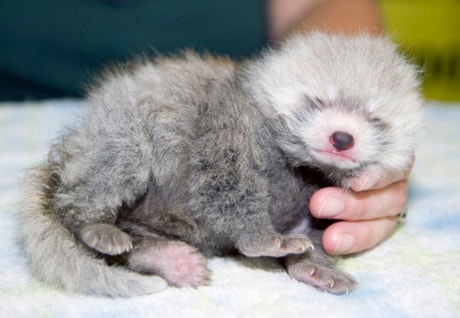It’s blind, deaf, fuzzy and proof you’re never too small to make a difference.
Just weeks old, Sha-lei the baby red panda cub is helping Edmonton’s Valley Zoo push forward with its goal of becoming a leader in breeding the rare bears, zoo employees said.
The new addition was conceived as part of a species survival breeding program that could help bring the Styan red panda back from near extinction.
“They think there’s only about 2,500 to 3,000 of them left in the wild,” said Sandy Helliken, animal health technologist with the Valley Zoo. “Their habitat is decreasing and due to deforestation the habitats are becoming unlinked so males and females don’t have access to each other anymore.”
The numbers are even more dismal in North America, where about 50 Styan pandas live.
Edmontonians are playing a crucial role in ensuring the species doesn’t die out, said Sarah Glass.
“The Valley Zoo is an integral part of the red panda species survival program,” said Glass, co-ordinator of North American Red Panda Species Survival.
“Every birth is critical to the preservation of this sub-species.”
The latest birth came June 13, when the diminutive Sha-lei was born to two pandas originally from a zoo in Japan.
Sha-lei weighed less than a pound when she was born, but has since quadrupled in size.
She’s still too young to open her eyes. Her ears are still sealed shut too.
“They’re born blind and deaf,” said Helliken. “She’s been doing very well. She’s active and she’s doing everything she’s supposed to do at her age.”
Helliken has cared for Sha-lei since birth, pulling the cub from its biological mother’s care to increase its chance of survival.
“I do everything for her that mom would do for her,” Helliken said. “When she was first born I fed her every three hours, 24 hours a day. ”
“We’re very proud of the success we’ve had here with the number of pandas we’ve been able to produce to add to the red panda breeding program.”
